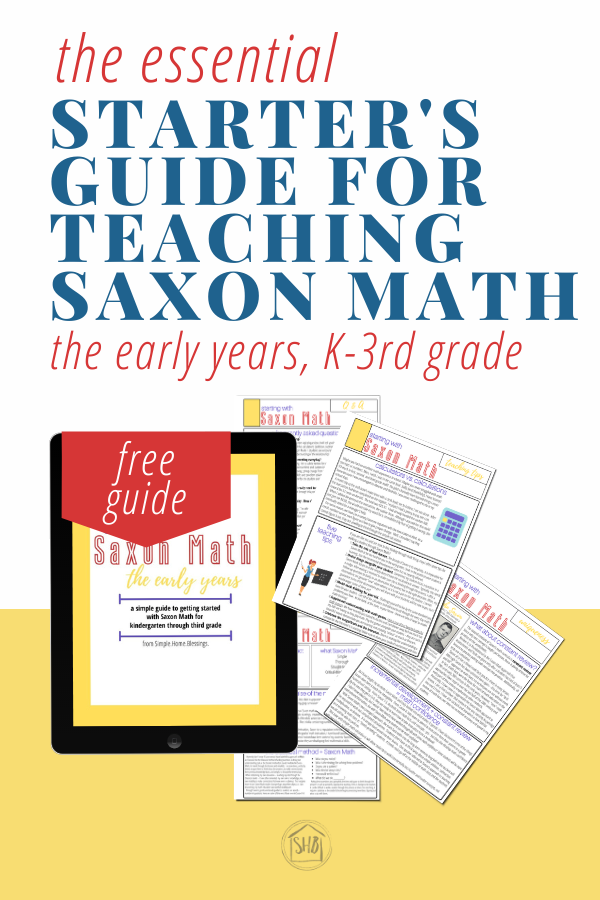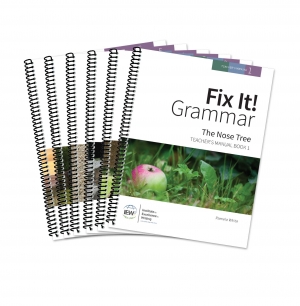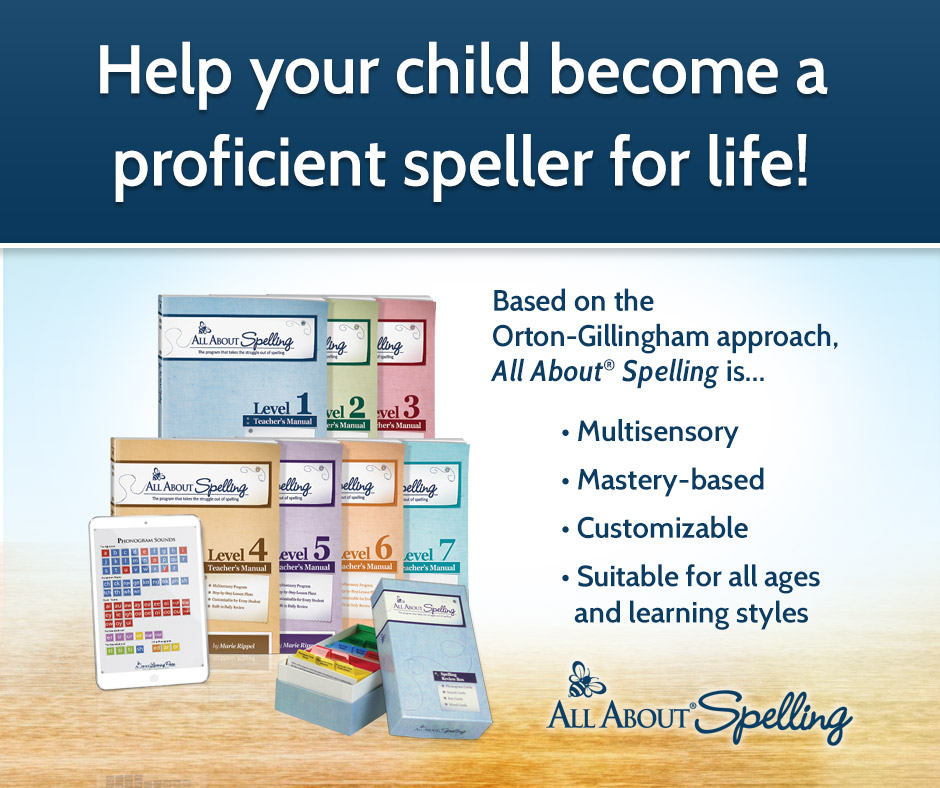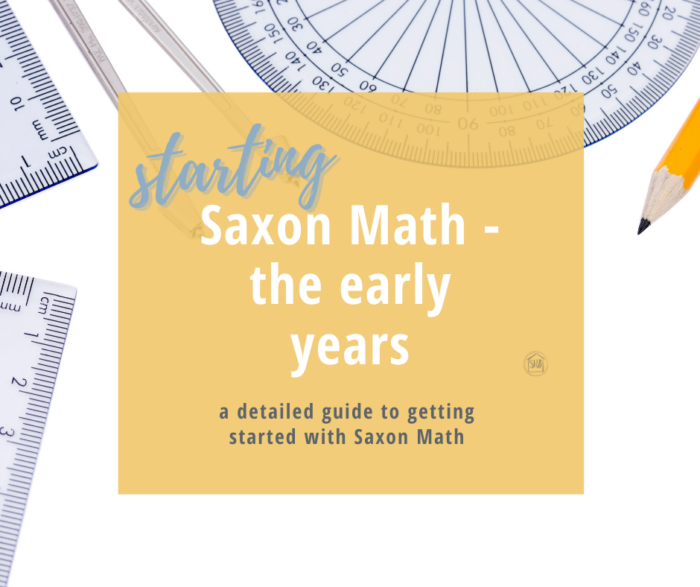
I LOVE Saxon Math! It has been a God-send for our homeschool over the past 5 years. I am convinced of its importance in the development of number sense in our kids. So much so, that I believe: if not for Saxon, we would not be learning much math in our homeschool.
I have shared here before our journey with math, pre-Saxon. It was not pretty! In the years we have been using Saxon Math, I have written quite a bit about it.
Though I am not an expert mathematician, I have become an expert on the early years of Saxon Math. We currently have 3 students working through the early elementary and elementary levels of Saxon Math.
This post may include affiliate links. If you click and make a purchase based on my recommendation, I get a small remuneration at no extra expense to you. I only recommend things I use and believe to be a blessing.
If you are looking to buy Saxon Math curriculum or are looking for the placement test, I recommend ChristianBook.com for the best price and service.
My Heart for Saxon Math
I have to be real with you here: I am shocked by the way I hear others talking about Saxon Math. The complaining, the adjusting, the skipping! I can’t take it any more!
Saxon Math is not for everyone – that’s what I am supposed to say. And sure, I agree with that to a certain extent. But at the same time I hold that to be true, I don’t know of a better way to teach math in the early years.
Is it boring sometimes? Yes.
Is it repetitious always? Yes.
But are those bad things? Absolutely NOT!
I absolutely love Saxon Math for the very structure of it. The repetition, the straightforward simple instruction. And I love that it gives me a script for the early years, because me teaching math to my kids would not happen without it.
Introducing Saxon Math
I am sad when I see Saxon Math denigrated in homeschooling circles. Repeatedly, I hear other Saxon Math users tell new Saxon Math teachers to skip lessons, to require less than the program prescribes, and to avoid some of the harder things.
For this reason, I put all my thoughts together in a simple primer to introduce (or re-introduce) Saxon Math to the homeschooling world. It is called Getting Started with Saxon Math: the early years.
It is a 12-page guide full of information about Saxon Math. The topics addressed in the guide include:
- what makes Saxon Math special
- what is incremental development?
- about constant review
- incremental development + constant review = math confidence
- the classical model + Saxon Math
- calculators vs. calculations
Getting Started with Saxon Math: the early years also includes lots of tips for teaching and planning to teach Saxon Math, like:
- timer talk
- create systems for the year
- 3 helpful habits
- my “prepare twice teach all month” prep plan
- an FAQ
Oh, and I forgot to mention, Getting Started with Saxon Math: the early years is FREE! Woohoo! Just fill out this form to get it in your inbox.
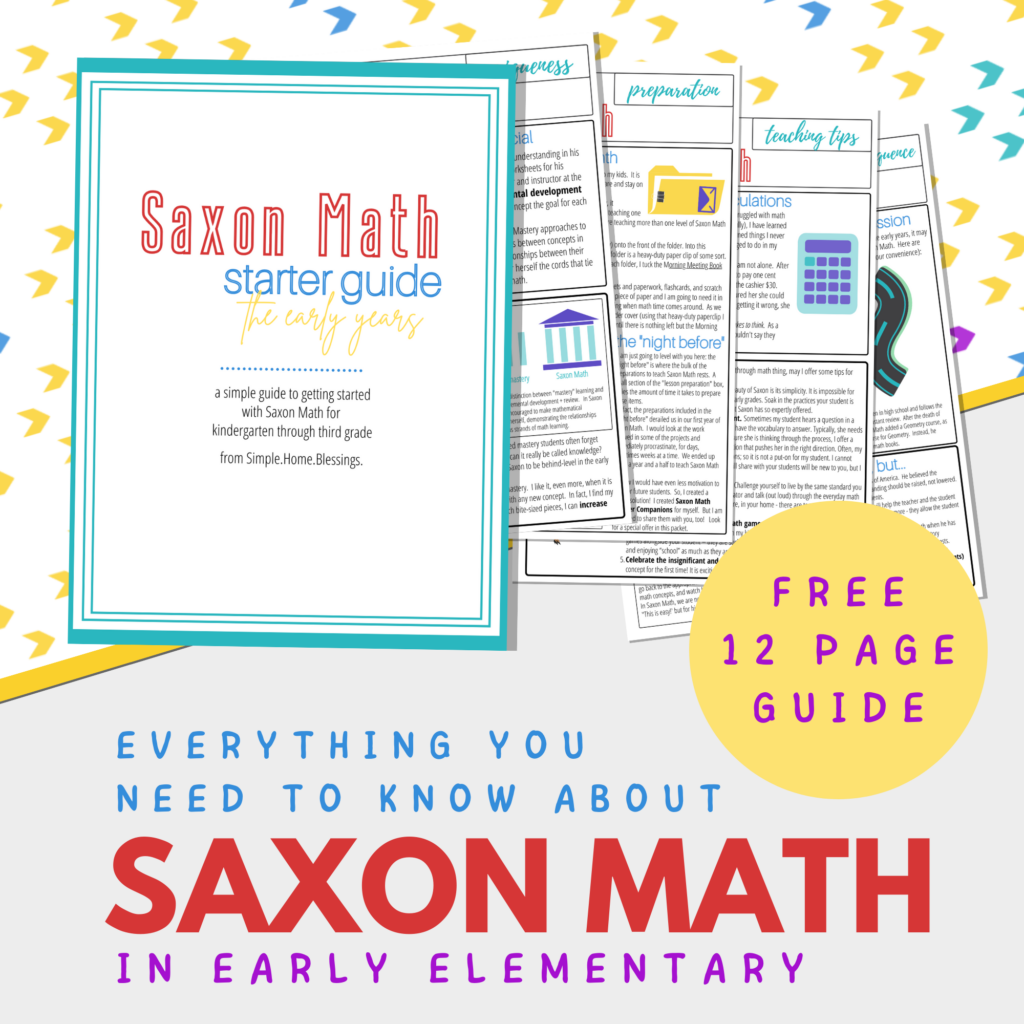
Interested in more about Saxon Math? I hope these articles are a blessing to you:
Share this with others by pinning or sharing this image on social media:
